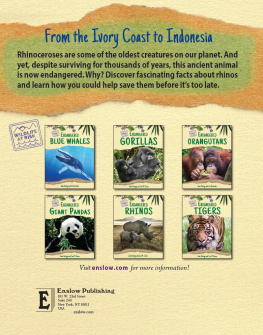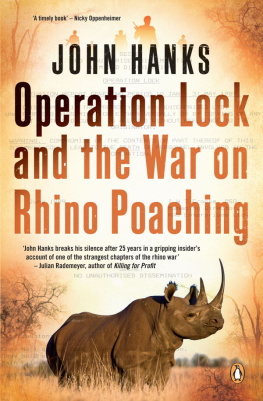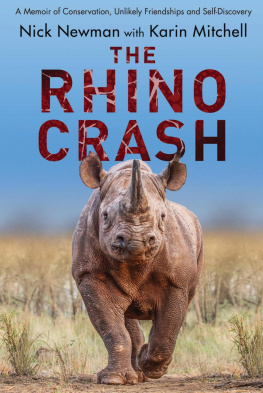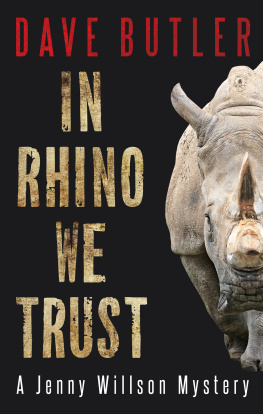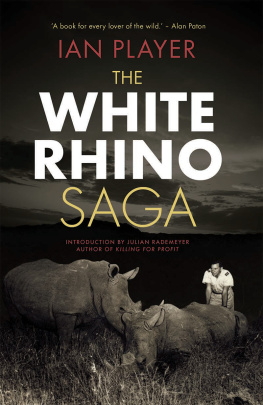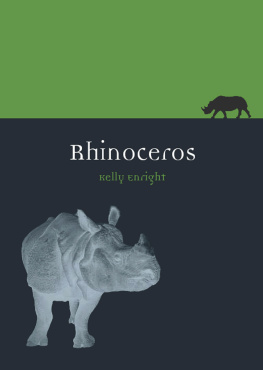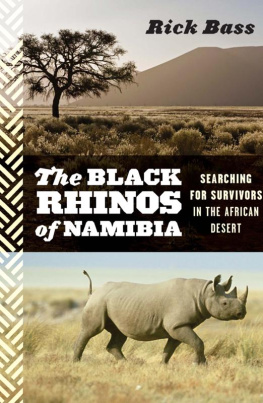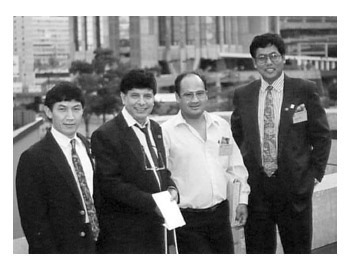THE SOUL OF THE RHINO is unusual, fascinating, and important. It provides not only a rare insight into the personality and behavior of the highly endangered and little known Asian rhino, but an equally absorbing picture of the people who share its habitat. Hemanta Mishra is a native of Nepal, and he shares his struggle to reconcile Western conservation science, learned when he studied in America, with the cultural beliefs of his people; he attempts to combine hard facts with the mystical values of Eastern philosophy. THE SOUL OF THE RHINO is also a commentary on the way in which wildlife management can be helped or tragically hindered by revolution, politics, and the commitment, or lack of it, of those in power. Most important, it will surely inspire other young people in Asia to follow in his footsteps. I hope you will buy and read this book. Dr. Jane Goodall, DBE, founder - the Jane Goodall Institute & UN Messenger of Peace
Hemanta Mishra helped to establish Nepals famous Chitwan National Park, and he has with great dedication fought for three decades to assure the survival of its rare Indian rhino. From the unique perspective of a Nepali dealing with conservation battles in his own country, he describes his contacts with everyone from poacher and foreigner to bureaucrat, royalty, and rhino. I enjoyed THE SOUL OF THE RHINO immensely for its potent conservation message, as well as its insights into a culture and the soul of the author. George B. Schaller, Wildlife Conservation Society
It is the first book of its kind that proves that nature conservation in Asia does not only depend upon good Western science. But like politics in America, it is an artan art of the possiblean art that puts human needs and culture in the forefront of environmental conservation. Lodi Gyari, special envoy of His Holiness the Dalai Lama
This book is much more than a story about rhinos. It is an account of the traditions, customs, and rituals of the people who live in the southern Terai region of Nepal known as Chitwan. It is also a story about how one man embarked on a cause to save this sacred national symbol from the effects of rampant habitat destruction and illegal poaching. Leon J. Weil, former U.S. ambassador to Nepal (19841987)
For anyone interested in wildlife, the Himalayan region, Hindu and Buddhist culture, this book is a delight. Many well-meaning, dedicated conservation supporters have written enthusiastically about environmental, species, and cultural conservationbut Mishra has not only talked the talk, he has really walked the walk, as the reader will learn. Kenneth Nebenzahl, director of the American Himalayan Foundation, member of the WWF-US Council, and life trustee of the University of Chicago
Copyright 2008 by Hemanta Mishra
ALL RIGHTS RESERVED. No part of this book may be reproduced or transmitted in any form by any means, electronic or mechanical, including photocopying and recording, or by any information storage and retrieval system, except as may be expressly permitted in writing from the publisher. Requests for permission should be addressed to The Lyons Press, Attn: Rights and Permissions Department, P.O. Box 480, Guilford, CT 06437.
The Lyons Press is an imprint of The Globe Pequot Press.
10 9 8 7 6 5 4 3 2 1
Printed in the United States of America
Designed by Claire Zoghb
ISBN 978-1-59921-146-6
Library of Congress Cataloging-in-Publication Data is available on file.
IN LOVING MEMORY OF
Mingma Norbu Sherpa (left), Tirtha Man Maskey (second from right), and Chandra Prasad Gurung (right)the heroes and builders of nature conservation in Nepal and my band of brothers in bringing the rhino back from the brink of extinction
(Courtesy: Phurva Sherpa).
FOREWORD Bruce Babbitt

T his book is an intriguing adventure tale, set in lowland jungles beneath the towering summits of the Himalayas in remote regions of Nepal, in which the author is seen stalking the mythical Indian rhino from atop a large, lumbering elephant. He is not, however, seen toting a high-powered rifle, and he is not searching for a trophy kill. His weapon is a tranquilizer gun, and his mission is to save the rhino from extinction.
Hemanta Mishra is a native Nepali, raised in the Hindu Buddhist tradition. Early on he decided on a career as a forester and naturalist, and along the way he became fascinated with the rhino and set out to save it from extinction. In the process he obtained an advanced degree in Scotland, studied the American system of national parks, returned to Nepal to continue field work, befriended American philanthropists, learned the ways of palace intrigue in Kathmandu, and perfected the dangerous techniques necessary to capture and transplant these creatures to extend their range and chances for survival.
Beneath the surface of these adventure tales, however, the author has an important message for those of us interested in nature conservation in Nepal and elsewhere in developing regions of the world. To save the rhino and the tiger and to preserve our heritage of biological diversity, we must acquire more than textbook knowledge. We must also listen to indigenous communities, learning their history and traditions and factoring in their needs and aspirations for the future. We must blend Western science with tradition and mythology and have the patience and wisdom to reconcile the two.
The climactic chapters of this book recount the planning and execution of the royal hunt of Tarpan, in which the king of Nepal must hunt and kill a male rhino and make a ritual offering of the dead animals blood to assure peace and prosperity in the kingdom. When called upon to organize the royal hunt, Hemanta is repelled by the thought of killing even one rhino. Yet he must retain the goodwill and patronage of King Birendra in order to expand nature reserves within the kingdom.
Tarpan as described by the author is a primitive and bloody ritual, yet also a mystical and evocative ceremony in which participants approach and enter the rhino carcass on the forest floor, suffused with the yellow light of oil lamps, the scent of incense and flower petals, and priests chanting ancient Sanskrit verses. Finally the author resolves to partake in the ceremony, reconciling his Western education and his traditional upbringing in a transcendent momentI had found my soul in the body of a rhino.
In recent years Nepal has been torn by armed rebellion and political violence. Both the monarchy and the Tarpan ritual may disappear, and the fate of the rhino is once again less than certain. However, ancient myths and the beauty and instructive power of Hindu and Buddhist tradition will surely endure. And this book will continue to remind readers that to save the planet we must reconcile science and tradition and assure a future for both indigenous peoples and wildlife.
Bruce Babbitt,
Chairman of the World Wildlife Fund
Washington, D.C.
March 2007
FOREWORD Jim Fowler



